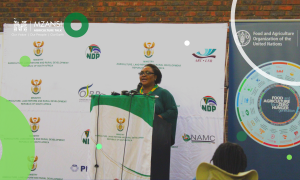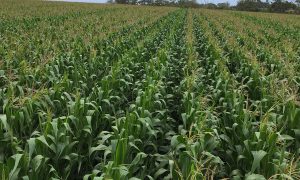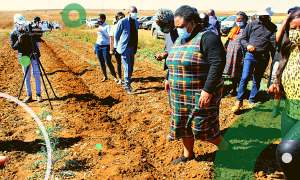Headline inflation reversed course and beat expectations by decelerating to 5.3% year-over-year (y/y) in March 2024, which is on par with the January level but below February’s 5.6%. Drifting away from the upper end of the SARB’s target range is good news for the monetary policy outlook as consumers wait in anticipation for a relief from the higher interest rates.
Senior Agricultural Economist at FNB Commercial, Paul Makube, said worryingly though, is the average fuel prices that jumped by 2.3ppts to 5.3% (Month on month)m/m and 0.8ppt to 6.2% y/y thus reaching the highest level since October 2023.
Further, Makube said, the estimated under/over recovery on various fuel categories as of 16 April 2024 indicated a potential increase of 24 cents and 29 cents for the diesel 0.05% and 0.005% grades respectively.
“This not good news for producers as cost of distribution of produce and running electricity generators during loadshedding increases operational costs. However, there is a potential relieve for consumers as the petrol price might decrease by 34 cents and 33 cents for the 95 ULP and 93 ULP/LRP respectively,” explains Makube.
He said food inflation decelerated to a 42-month low of 4.9% y/y and fell by 0.1% m/m in March 2024, except for fish which rebounded from 3.2% previously to 4.1% y/y in March, most food subcategories continued to decelerate.
Meat inflation continued to decelerate in 2024 and reached the lowest level of 0.8% y/y since August 2019. The monthly
Makube said this trend is likely to continue in the medium term on the back of increased supplies due to the dryness that reduced feed availability for overwintering.
“Increased seasonal supplies due to weaning in the cattle market will further limit near term price growth. For poultry, the implementation of certain rebates on imported poultry following the announcement by the Department of Trade and Industry and the International Trade Administration Commission of South Africa (ITAC) earlier in the year poses further downside risk for prices,” he said.
In contrast, said Makube, global meat inflation as measured by the United Nation’s Food and Agriculture Organization (FAO) extended the 16-month run in negative territory at -7.7% y/y although having nudged 1.1% m/m in March.
“We saw a similar trend in the FAO meat inflation which fell to -1.5% y/y although rebounding by 1.7% m/m. Except for bovine meat which decelerated to 1.9% y/y, all categories tracked declined with ovine meat posting the biggest decline of 20.6% y/y, followed by pig meat (-2% y/y), and poultry (-1.8% y/y).”




















